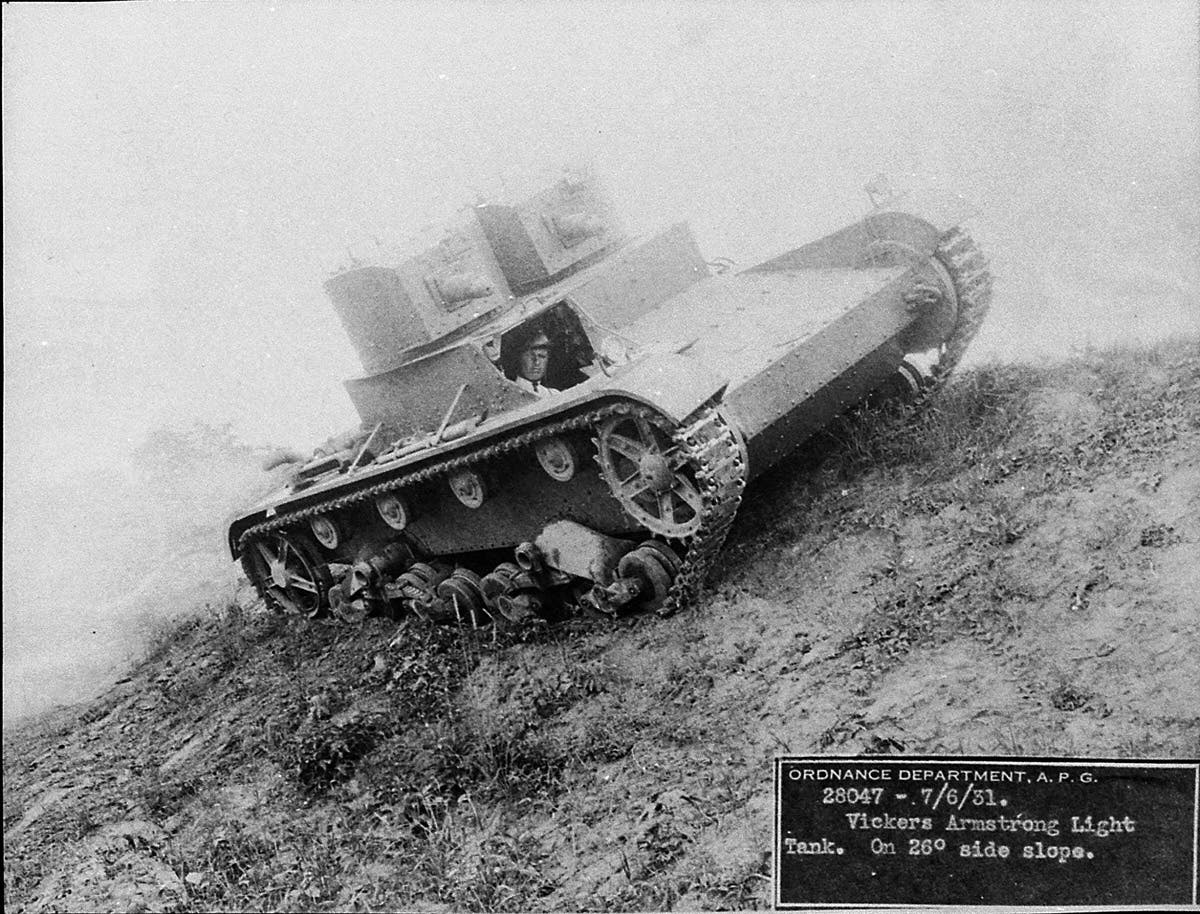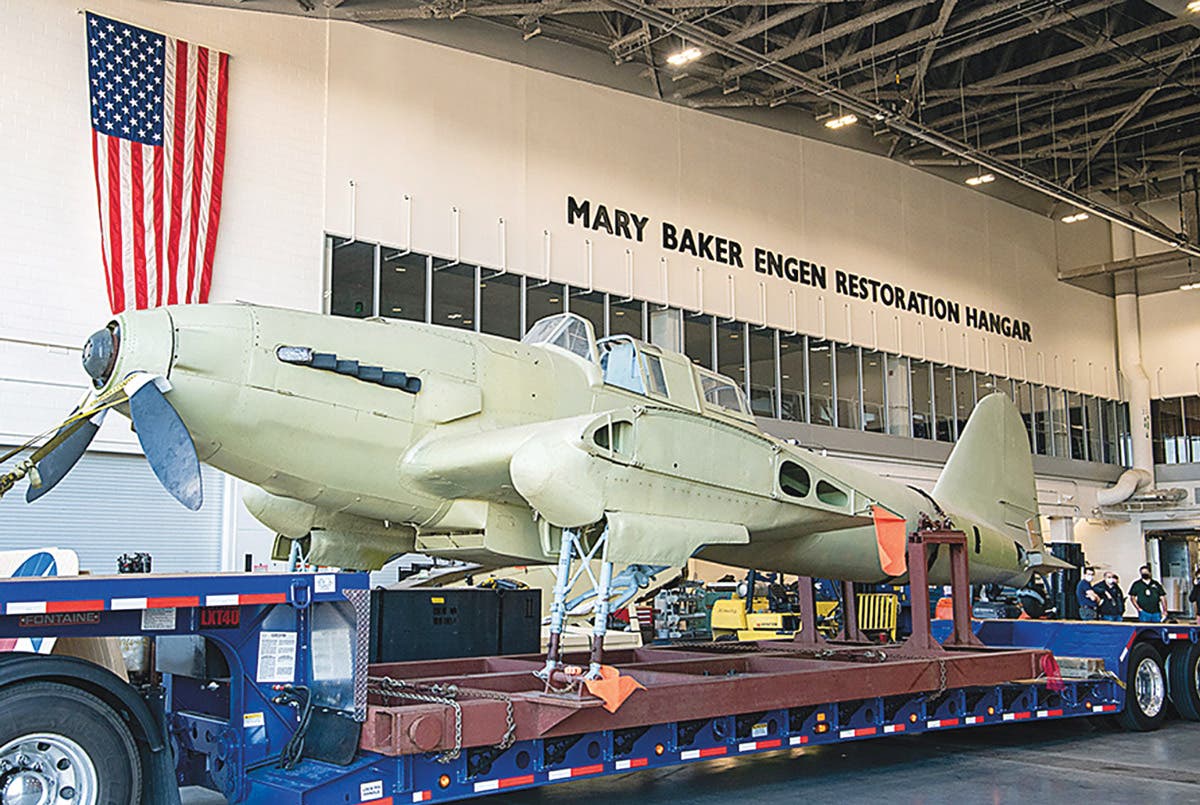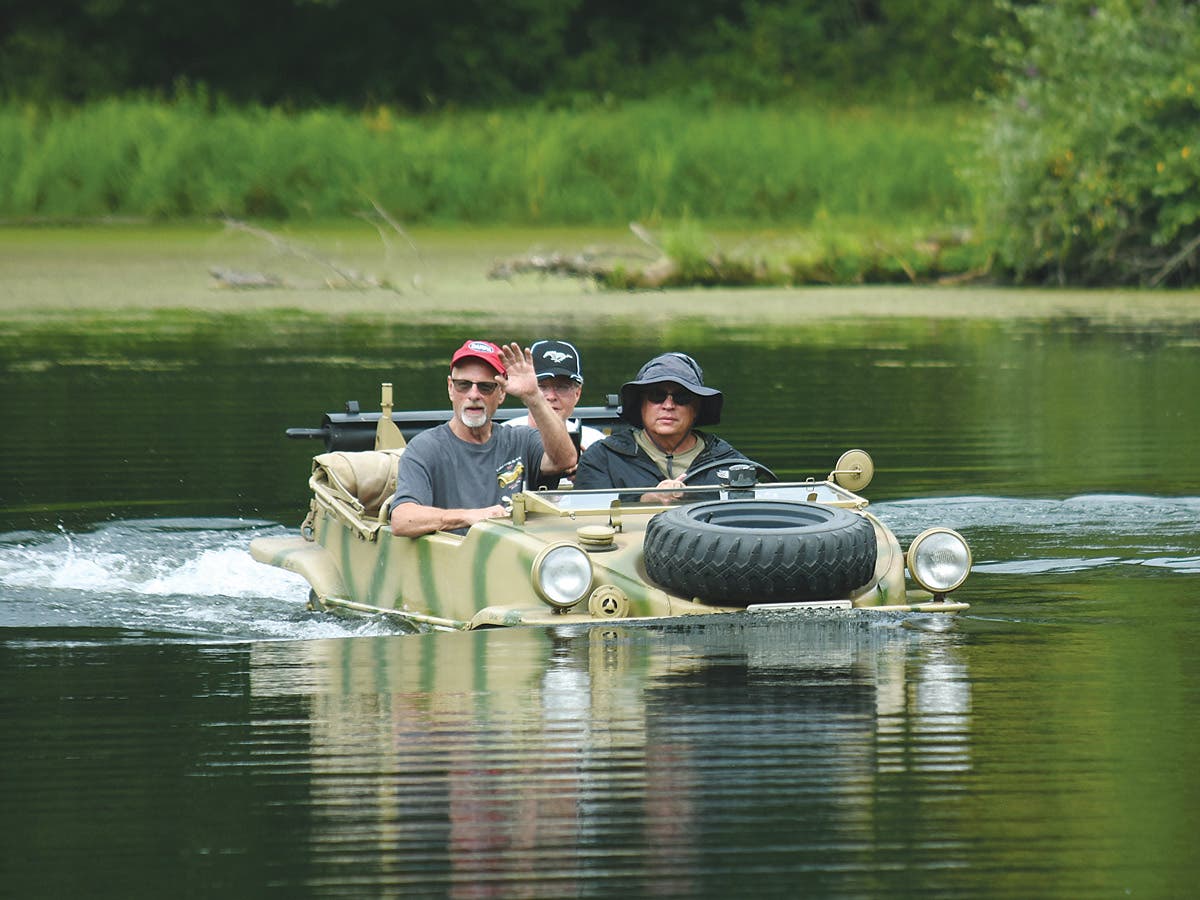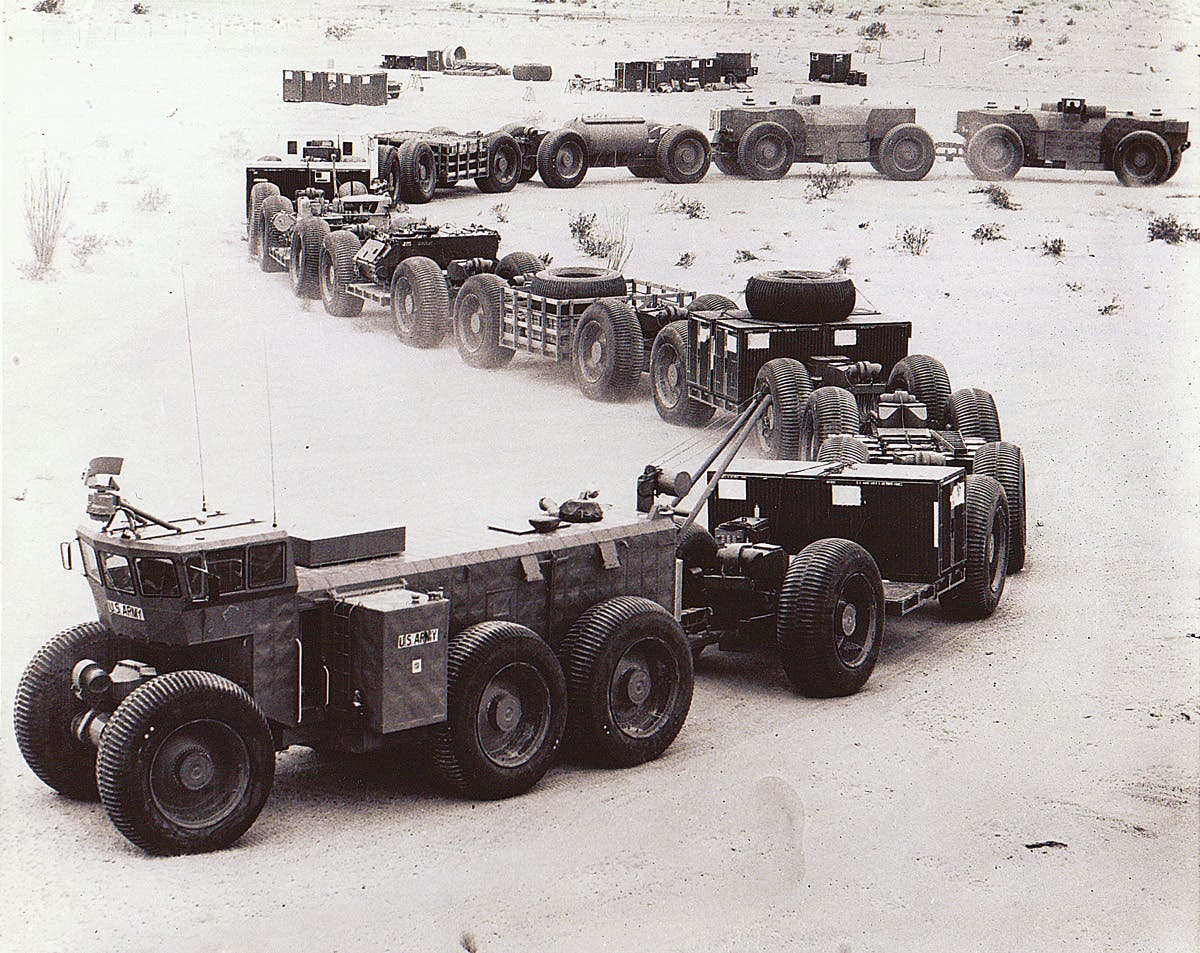Restoring a WWII Canadian Dodge D15 of the Royal Army Service Corps
A family’s generational love for those curves lead them to revive a WW2 Dodge D15 Truck like the one their grandfather drove.
My grandfather, Douglas Eric Balding CSM, 396 Coy, Royal Army Service Corps (RASC), died in January 2014. He was 95.
As a kid, I always enjoyed his humorous — and often tall — tales from WWII. As I grew older, I pressed him more and more on actual details and facts, even though he seemed less willing to talk about his real experiences.
On reaching my 40th birthday, he gave me a thick brown folder. It contained his army service records. Of course, I had many questions regarding some of the information in the records. Over the next couple of years, he did talk about his time in pre-war Palestine and Egypt. He also told me about his recollection of his short time in France in 1940 and his evacuation through Dunkirk.
You see, Grandad was driver in the Royal Army Service Corps. He was responsible for delivering supplies.
He was fond of his Bedford 15CWT truck in France, and still recalled how upset he was when his CO told him to dump his load of rations and make for Dunkirk. He abandoned his Bedford so that he could make it back to the UK.
Many of his friends and comrades weren’t so lucky.
WWII SERVICE
Safely back in the UK, he married my grandmother, completed NCO training, and after the immediate threat of an Axis invasion of the UK had passed, was shipped off to North Africa as a Sergeant. Half of his company were shipped over in the autumn of 1942. Grandad’s half of the unit had to wait until November because the ship (The Dutchess of Athol) that was returning to collect them had been torpedoed and sunk by a German U-Boat off the West Coast of Africa.
In North Africa, he was assigned command of a section of water tankers. He was charged with running supplies to the forward camps. To do the job, the unit was equipped with a mixture of 15CWT Bedfords and Canadian D15 Dodges.
In July 1943, his company was moved to Sicily to support Monty and Patton’s fast moving armies. His unit was the first RASC company to land on Italian soil.
Most of the rest of the war was spent supporting Clarke’s US 5th Army and Monty’s 8th Army as they made slow progress up the Italian mainland. Apart from a brief convoy to Austria in 1945, Sgt. Balding spent three years in Italy. Most of his stories occurred there: Fishing with a box of grenades, learning to ski in the Italian mountains, and moving “grumpy” German POWs between prison camps.
He had some more solemn tales as well. One was ofa stricken US Liberator bomber flying over his convoy when the crew baled out. After driving his Dodge over rough ground to the location of the parachutes, he was able to collect all of the crew but one. The last chap’s parachute hadn’t opened - he didn’t make it. Sgt. Balding dropped the crew off at the next stop, but not before they had made a significant hole in his truck’s ration cargo.
RECREATING GRANDPA’S CANADIAN DODGE D15
My grandfather always claimed his favorite vehicle of the many he was required to drive throughout the war was the Canadian Dodge D15. He enjoyed the warmth of the closed cab in the harsh Italian winters.
After he died, I decided to do some more research on his unit. I located the full set of his company’s war diaries at the UK National Archive in London.
Following a fascinating couple of days reading (which included actually finding official validation of the Liberator incident and even a warning from the CO about fishing with hand grenades), I was humbled at just what the unit had been up to in Italy. From moving entire hospitals to delivering supplies to the frontline camps, suffering artillery and air attack casualties, there was very little a RASC unit wasn’t asked to haul around.
The diaries also contained a gem of a document: The full company audit of vehicles including chassis numbers and order numbers. Assigned to his unit were:
- 16 Canadian Dodge D15 SG trucks
- 134 10-ton Mack trucks
- 27 Matchless Motorcycles
- 12 Bedford 3-ton trucks
- 15 Water trucks (Dodge, Bedford and Morris)
- 6 Others (Chevy/Humber/Fords)
Armed with a list of chassis numbers ,I decided that I should try and find any of the historic military vehicles (HMVs) from my Grandfather’s unit. In particular, a Dodge D15, the truck he so admired.
I started by trawling the web, forums, and contacts for information. I made contact with HMV enthusiasts in Italy, where some of the vehicles remained after the war. I spent years going to the big HMV shows in the UK, dragging the family around displays and asking owners if I could nose around under their displayed trucks to check the chassis numbers. When vehicles of any of the types listed in the RASC records came up for sale, I contacted sellers asking about the chassis numbers of their vehicles. I didn’t manage to locate any of the 200+ vehicles.
The nearest hit I had was only 30 miles from home. A friend’s Mack 10T truck’s chassis number was only one number away from one of the RASC Macks.
During the search, I fell in love with the sleek D15 trucks. In the years of searching, I had not seen one in the flesh. So, I decided to try and track down and buy a runner to keep my MB Jeep and WC-54 Ambulance company.
Locating a D15 is easier said than done. I had never seen one. Trying to find one for sale was nigh on impossible.
I had made inquiries about a couple of barn-find D15s in South Africa. They didn’t run, and did not have the correct T222 engines.
I then had a lead on a collector in the Catalan district in Spain. My Father and his Dutch buddy were on vacation in the area, so I sent them to scout out the collection. The next day, my Father called me. He excitedly explained that the collector had more than 50 war-time Dodges in a collection of HMVs numbering over a hundred.
I jumped on a plane the next week and went to visit. Unfortunately, all the Dodges were US WC versions. Regardless, it was worth the trip to see so much history in one place.
Then, finally in the Autumn of 2018, a restored 1942 D15 came up for sale in Belgium. Within an hour of seeing the advertisement, I paid a deposit and started to arrange to have the vehicle shipped to the UK.
I had to take a huge risk and pay the seller before the vehicle could be shipped — all without actually seeing it. It was a nervous 6 weeks wait before it arrived. It’s not a purchasing method I would normally recommend, but I wasn’t going to miss on the chance to own a D15. As it turns out, the seller was a true gentleman – honest and trustworthy. We still keep in touch despite having never met.
The D15 arrived in the North of England in October. I was just about able to drive it the 100 yards from the transporter to her new home at my parent’s house.
The standard of restoration on the truck was very solid and very original. Unfortunately, the chassis number did not match any of my Grandfather’s unit, but I was delighted to be the owner of one of the very few running D15s in the world.
She needed some light restoration on the bodywork, and the starter motor and linkage needed a considerable amount of adjustment. Eventually, we had her starting and running smoothly.
Inside the cab, she had her original Dodge early war civilian dashboard. Under the hood she was still running on her original T222 6 cylinder engine.
The previous owner in Belgium had marked her up as a Canadian 3rd Division truck. I had asked him if there was any history of the truck belonging to the Third, but he wasn’t aware of any provenance. He had simply marked it up as the unit that had liberated his town in 1944. He had also added the name “Highland Queen” to the front bumper, as he had seen a wartime picture of a D15 called that name. So, before the big re-paint, my son and father staged a re-working of the wartime Highland Queen photo for a bit of fun.
Once I had the running gear serviceable, I turned my attention to the aesthetics. A quick sand down of the surface rust areas and check on the likely locations for original unit markings revealed that the restoration had seen the bodywork blasted before re-painting. Unfortunately, any clues as to the wartime provenance of the truck were gone. I did find a possibly original “Chad” on the fuel tank with the cheeky chap asking “Wot no fuel?”
After a new coat of olive drab, I added the formation markings for the RASC 396 coy and 8th Army and added one of the D15 Z-numbers from Grandad’s RASC listings. Although “Highland Queen” no longer features as her name, we have renamed her as “Queenie” as a respectful link to her former owner.
She’s now ready for the 2019 show season. Word has already spread that she’s running again. We have just been invited to attend the 75th anniversary commemorations of Operation Market Garden in September.
“Queenie” will be taking part with many other commonwealth vehicles in the 10-day Liberation Run in Holland. We will be driving along the route that the British XXX Corps took down “Hells Highway” to link up the Dutch bridges captured by US and British paratroops in Operation Market Garden.
I would like to think Grandad would’ve been so happy to see one of his old favorite trucks again. I know he’d be pleased that some of his story is out there for people to smile at and reflect upon. Bless ‘em all.
You may also like:
*As an Amazon Associate, Military Trader / Military Vehicles earns from qualifying purchases.








